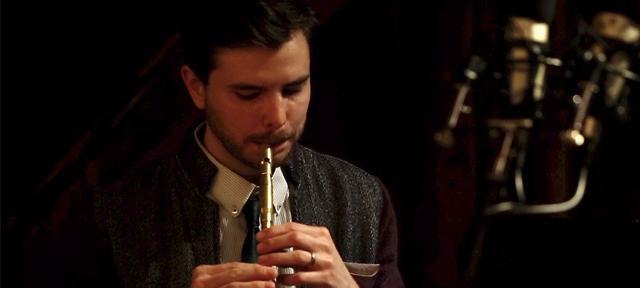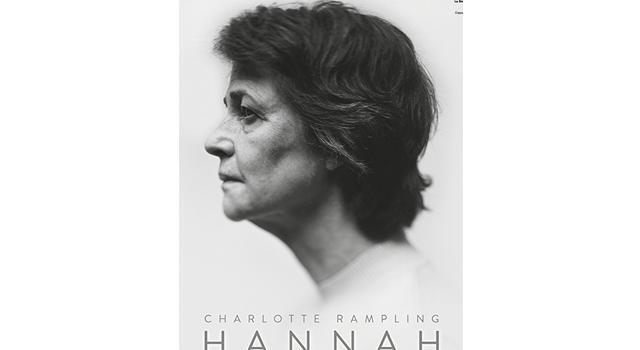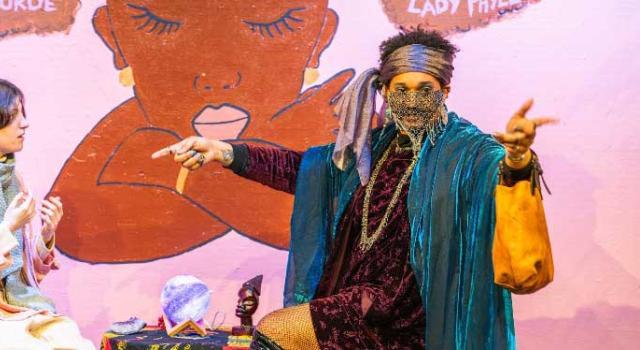Div III Profile: Sean Seid's Interpretations of Colonial American Music

Sean Seid’s inspiration for his Division III capstone project can be traced to a unique source: Since he was ten years old, the Virginia native has worked as a musician at Colonial Williamsburg, a living history museum in his home state.
Seid’s study, Balladeering: Interpretations of Colonial American Music, provides a 60-page thesis on balladeers, musicians who play historically accurate 18th-century popular songs in period-specific costumes. Seid 15F incorporated his seven years of experience as a professional balladeer into his ethnographic study, which covers the history of the program at Williamsburg as well as the details of the day-to-day existence of the musicians.
The notion of authenticity and and who defines it when playing centuries-old music forms the backbone of Seid’s thesis. He grapples with the pitfalls of presenting history packaged as a commercial product, and how cultural tourism determines in part what is performed and how. He critically examines the loose directive by Colonial Williamsburg management for balladeers to interpret and perform this music in a style and approach that is "authentic" to the 18th century.
While researching, Seid was also fine-tuning his own original compositions inspired by—but not strictly adhering to the format of—the same popular 18th-century music. “There are very strict guidelines if you want to write this music,” he says. “I followed those sensibilities, but not to a T.”
A multi-instrumentalist, Seid used the German flute, the pennywhistle, the mandolin, and the violin to provide his own spin to the traditional format. He composed two string quartets and wrote a trio for flute, violin, and cello. In addition, Sean arranged several 18th- and 19th-century tunes for fiddle and wooden flute.
What Seid calls “the culmination” of his work was an evening recital at Hampshire’s Red Barn, where he shared the stage with a band consisting of current Hampshire students and alums: Ryan Rogers 14F, Clara Gainer 14F, Tatiana Hargreaves 13F, and Olivia Vazquez 11F. “It was really rewarding to work with these pieces, with other musicians who had nice things to say, and to see and hear those pieces realized at a concert,” he says.
Seid chose the Red Barn, he says, because its ambience closely resembles that of the taverns of Colonial Williamsburg. “That was definitely an important aspect of the performance, making people part of that experience,” he says.
Professor Becky Miller was Seid’s committee chair and Professor Dan Warner was a member of his committee. Seid said Miller had a significant impact helping him improve his writing and Warner gave him “big-picture, structural advice.” Seid also worked with Professor Marty Ehrlich on his Division III and informally with Assistant Professor Junko Oba.
A 2015 transfer student, Seid said he was drawn to the personal relationships between faculty and students at Hampshire. He recounts a story from his Div III show, when he was chatting with Professor Oba, much to the surprise of his partner, who had flown in to see the recital. “My partner said, ‘I’ve never had a conversation with a professor like that.’ She’s been to three colleges, and she never had a conversation with a professor who looked at you like a person,” he says.
The costs of Seid’s travels for his thesis were defrayed by grant funding from Hampshire. Sean is also a 2017 recipient of the Five College Certificate in Ethnomusicology.
After Hampshire, Seid intends to pursue an advanced degree, and says he also hopes to continue documenting the balladeers.



